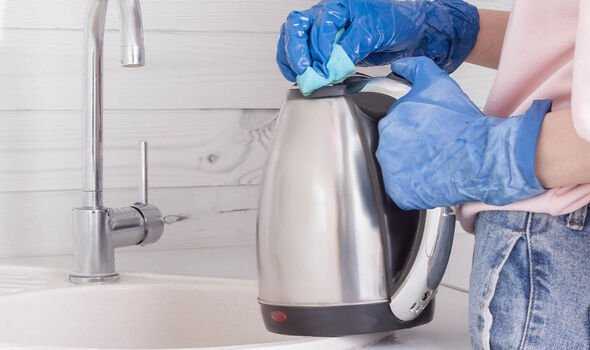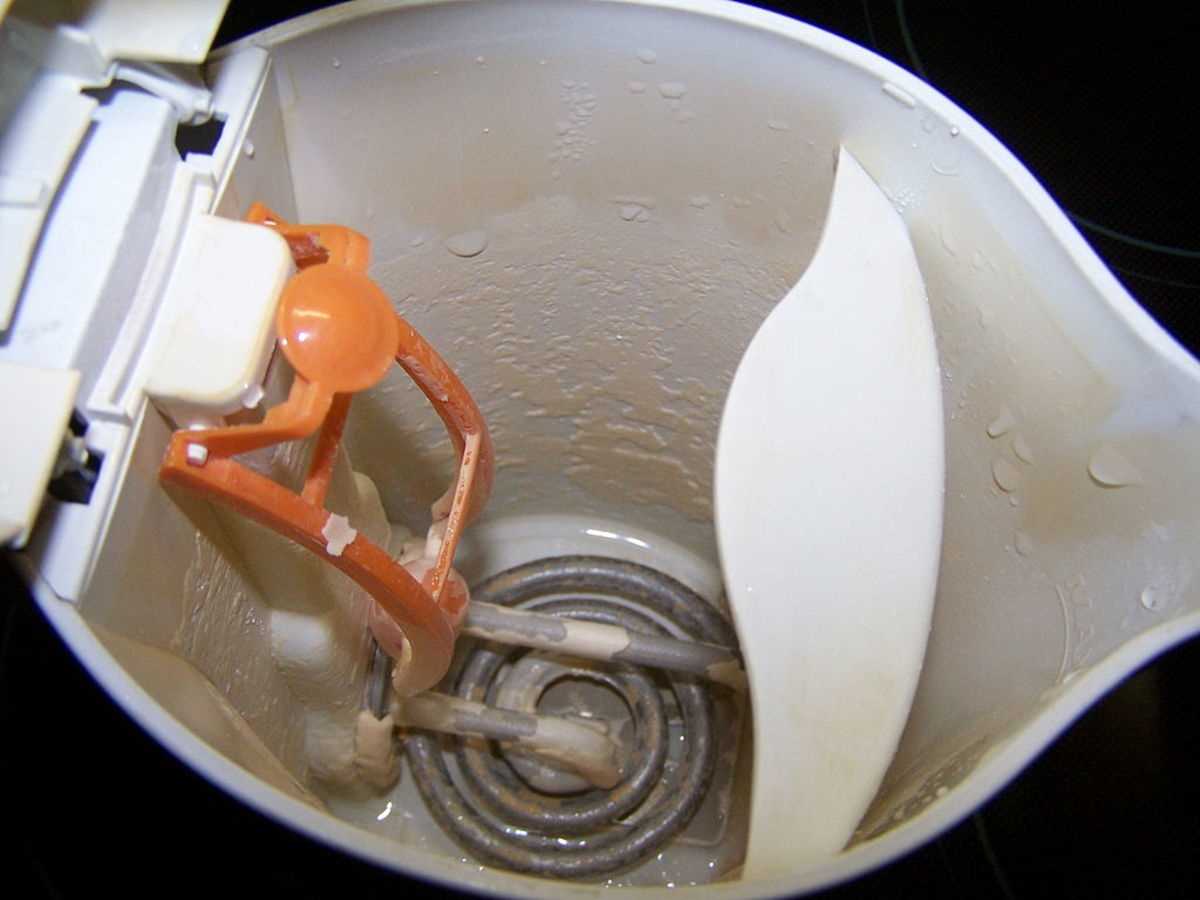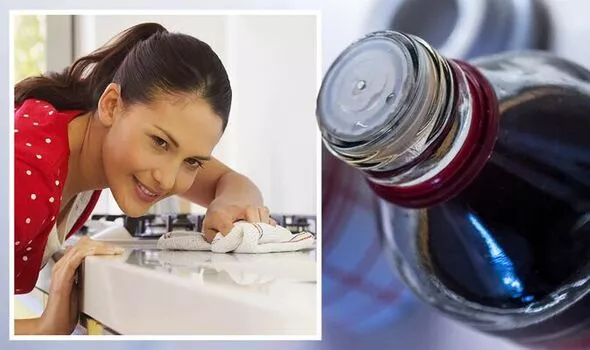


Having a clean and well-maintained kettle is essential for making a perfect cup of tea or coffee. Over time, mineral deposits from water can build up and cause scaling in your kettle, affecting the taste and functionality. Fortunately, descaling your kettle is a simple task that can be done using readily available ingredients, such as malt vinegar.
Malt vinegar, commonly found in most kitchen pantries, is an effective and natural way to remove stubborn limescale. Its acidity helps dissolve the minerals that accumulate in your kettle, leaving it clean and free from any residue. Using malt vinegar as a descaling agent is not only eco-friendly but also cost-effective.
To descale your kettle using malt vinegar, follow these easy steps:
- Start by ensuring that your kettle is unplugged and cool to the touch.
- Fill the kettle halfway with equal parts malt vinegar and water.
- Allow the mixture to sit in the kettle for about an hour to loosen and dissolve the limescale.
- After an hour, plug in the kettle and bring the vinegar-water mixture to a boil.
- Once the mixture has boiled, turn off the kettle and let it cool down.
- Empty the kettle and rinse it thoroughly with clean water.
- Your kettle should now be descaled and ready for use!
Descaling your kettle with malt vinegar regularly helps prolong its lifespan and ensures that you continue to enjoy clean, great-tasting beverages. Remember to rinse your kettle thoroughly after descaling to remove any residual vinegar taste.
Why You Should Descale Your Kettle Regularly

Descaling your kettle regularly is essential to ensure its optimal performance and prolong its lifespan. Over time, mineral deposits such as limescale can accumulate on the interior surfaces of your kettle, affecting its efficiency and potentially causing damage.
Here are a few reasons why you should descale your kettle regularly:
- Improved Efficiency: Limescale build-up can hinder the heating element’s ability to transfer heat to the water effectively. This can result in longer boiling times and increased energy consumption. Descaling your kettle will help remove these deposits and restore its efficiency.
- Better Tasting Water and Beverages: Limescale can also affect the taste and odor of the water boiled in your kettle. By descaling regularly, you can ensure that your drinks taste fresh and free from any unpleasant flavors or smells.
- Prevention of Breakdowns: Excessive limescale deposits can lead to damage to the kettle’s heating element or other components. Regular descaling can help prevent such issues and extend the lifespan of your kettle.
- Improved Safety: If limescale continues to accumulate in your kettle, it can hinder the boiling process and potentially cause the kettle to overheat. This can pose a safety hazard in your kitchen. Descaling regularly helps to maintain safe operation of your kettle.
By incorporating regular descaling into your household maintenance routine, you can enjoy the benefits of a clean and efficient kettle, ensuring that your hot beverages are always perfect.
Benefits of Descaling Your Kettle
Regularly descaling your kettle is important for maintaining its performance and longevity. Here are some benefits of descaling your kettle:
- Improves taste: Over time, mineral deposits from hard water can build up in your kettle. Descaling removes these deposits, ensuring that your hot drinks taste fresh and pure.
- Reduces energy consumption: When your kettle has a layer of limescale, it takes longer to boil water. This means that your kettle will use more energy, resulting in higher electricity bills. Descaling can help your kettle work more efficiently and save energy.
- Prolongs the life of your kettle: Limescale build-up can affect the performance of your kettle and cause it to break down prematurely. Regular descaling removes these deposits and helps to extend the lifespan of your kettle.
- Prevents clogging: Mineral deposits can accumulate in the spout and filter of your kettle, causing blockages and affecting water flow. Descaling prevents clogging and ensures a smooth pouring experience.
- Improves efficiency: A clean and descaled kettle will heat water more quickly and efficiently. This is especially important if you use your kettle frequently or for large quantities of water.
- Maintains hygiene: Limescale build-up can provide a breeding ground for bacteria and other microorganisms. Descaling helps to keep your kettle clean and hygienic.
By descaling your kettle regularly, you can enjoy better-tasting drinks, save energy, and prolong the lifespan of your appliance.
Gather the Necessary Supplies
- Malt vinegar
- Water
- Kettle
- Scrub brush or sponge
- Cloth or towel
Before you begin descaling your kettle, make sure you have all the necessary supplies. Here’s what you’ll need:
- Malt vinegar: This is the key ingredient for descaling your kettle. Make sure you have enough vinegar to fill the kettle.
- Water: You’ll need water to dilute the vinegar and rinse the kettle.
- Kettle: Of course, you’ll need a kettle to descale. Make sure it’s empty and unplugged.
- Scrub brush or sponge: You’ll need a brush or sponge to scrub the inside of the kettle and remove any stubborn stains or mineral deposits.
- Cloth or towel: You’ll need a cloth or towel to wipe down the outside of the kettle once you’re done descaling.
Having these supplies ready will make the descaling process much easier and more efficient. So gather everything and let’s get started!
Step-by-Step Guide to Descaling with Malt Vinegar
What You’ll Need:
- 1 cup of malt vinegar
- 1 cup of water
- A kettle
- A clean cloth or sponge
Instructions:
- Prepare the Solution
- Pour the Solution into the Kettle
- Let it Sit
- Scrub the Interior
- Rinse and Repeat
- Dry and Test
In a small bowl, mix together 1 cup of malt vinegar and 1 cup of water. Stir well to ensure they are thoroughly combined.
Open the lid of your kettle and carefully pour the vinegar and water solution into the kettle, making sure to cover the limescale build-up or mineral deposits.
Allow the solution to sit in the kettle for at least 1 hour or overnight for more stubborn limescale deposits. This will help break down the limescale and make it easier to remove.
Using a clean cloth or sponge, scrub the interior of the kettle to remove any remaining limescale. Pay extra attention to the areas with heavy buildup.
Rinse the kettle thoroughly with water to remove any vinegar residue. If there are still noticeable limescale deposits, repeat the process again or use a descaling agent specifically designed for kettles.
Once the kettle is clean, dry it thoroughly with a clean cloth. Fill it with water, bring it to a boil, and pour it out to ensure that all traces of vinegar and limescale have been removed.
Congratulations! Your kettle is now descaled and ready to use again.
Rinse and Clean Your Kettle

After descaling your kettle with malt vinegar, it is important to rinse and clean it thoroughly to remove any residual vinegar and scale buildup.
Step 1: Empty the Kettle
First, make sure the kettle is completely empty by pouring out any remaining vinegar solution from the descaling process.
Step 2: Rinse with Water
Next, fill the kettle with fresh water to about halfway or until the maximum fill line. Swirl the water around to ensure it reaches all areas of the kettle.
Step 3: Boil the Water
Place the kettle on the stovetop or plug it into an electrical outlet and boil the water. Allow the water to reach a rolling boil for a few minutes.
Step 4: Discard the Water
Once the water has boiled, carefully pour it out of the kettle. Be cautious as the kettle and water may be hot.
Step 5: Repeat if Necessary
If there are still signs of scale or vinegar residue, repeat steps 2-4 until the kettle is thoroughly rinsed and clean.
Step 6: Wipe the Kettle

After rinsing, use a clean cloth or sponge to wipe the interior and exterior of the kettle to remove any remaining residue or water spots.
Step 7: Dry the Kettle
Allow the kettle to air dry completely or use a clean towel to dry it thoroughly before using it again.
Following these steps will ensure that your kettle is clean, free from scale and vinegar residue, and ready to use for making delicious hot beverages.
Maintain a Descaled Kettle
Regular Cleaning
To maintain a descaled kettle, it is important to clean it regularly. This will help prevent the build-up of limescale and keep your kettle in good condition for longer.
Here are some easy steps to clean your kettle:
- Fill the kettle with equal parts water and white vinegar.
- Let the solution sit in the kettle for about an hour.
- Boil the vinegar-water mixture.
- Empty the kettle and rinse it thoroughly with clean water.
- Wipe the outside of the kettle with a damp cloth.
Preventative Measures

In addition to regular cleaning, there are some preventative measures you can take to maintain a descaled kettle:
- Use filtered water instead of tap water. This can help reduce the likelihood of limescale build-up.
- Empty any leftover water from the kettle after each use.
- Avoid overfilling the kettle. Fill it with only as much water as you need for your intended use.
- Consider using a water softener or descaling product periodically to further prevent limescale buildup.
Benefits of Maintaining a Descaled Kettle
Maintaining a descaled kettle has several benefits:
- Improved taste of boiled water: A descaled kettle will ensure that there are no impurities or unpleasant tastes in your boiled water.
- Efficient boiling: Limescale build-up can cause your kettle to work less efficiently. By keeping it descaled, you can save energy and boil water faster.
- Longer lifespan of the kettle: Regular maintenance can help extend the lifespan of your kettle, saving you money in the long run.
Summary
To maintain a descaled kettle, clean it regularly using a vinegar-water solution. Take preventative measures such as using filtered water and emptying leftover water. Enjoy the benefits of improved taste, efficient boiling, and a longer lifespan for your kettle.
FAQ
How often should I descale my kettle?
It is recommended to descale your kettle every 2-3 months to keep it clean and functioning properly.
Can I use any type of vinegar to descale my kettle?
Malt vinegar is the best choice for descaling your kettle as it is effective and safe to use. Other types of vinegar may not work as well or leave behind a strong odor.
How do I know when my kettle needs descaling?
You may notice a buildup of limescale or a decrease in the heating performance of your kettle. If the water takes longer to boil or there is a white substance inside the kettle, it is time to descale it.
Can I use other descaling products instead of malt vinegar?
Yes, there are descaling products available in the market specifically designed for kettles. However, malt vinegar is a more affordable and natural alternative that works effectively.
What is the best method to descale the kettle with malt vinegar?
First, fill the kettle halfway with water and the other halfway with malt vinegar. Let the solution sit for about an hour, then boil it. Finally, empty the kettle and rinse it thoroughly with water to remove any vinegar residue.












